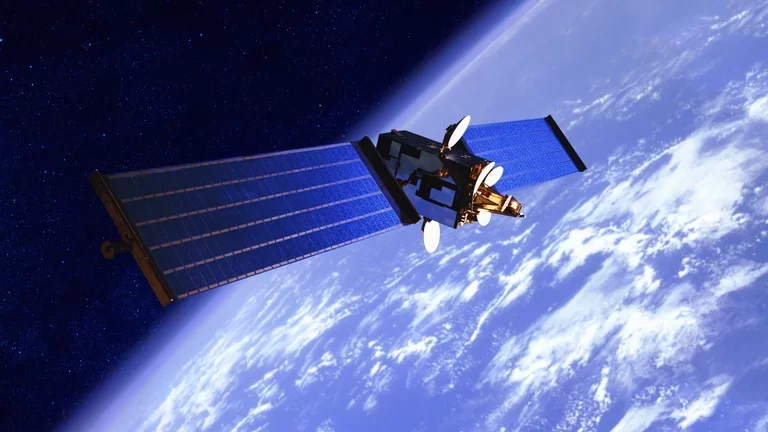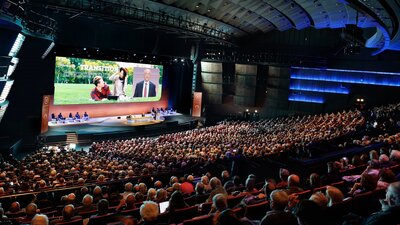Space is one of the Group’s key innovation and research sectors, but how much do you know about its evolution within Air Liquide?
Space is a sector characterized by state-of-the-art technology, which requires years of research and constant questioning. Armed with more than 50 years of expertise in this area, the Group has developed many tools to facilitate space exploration. This work has also helped to provide solutions to other problems, including those linked to space, the energy transition and even the transportation sector.
Take our quiz!
When did Air Liquide’s space adventure begin?
False
In 1962, Jean Delorme, the Chairman and CEO of Air Liquide at the time, decided to create an advanced research hub near Grenoble after having been persuaded of the industrial interest in cryogenics. The hub was dedicated to cryogenics, the study of very low temperatures, and tested cryogenic tanks that were manufactured on site, particularly full-size tanks tested in space conditions.
False
In 1962, Jean Delorme, the Chairman and CEO of Air Liquide at the time, decided to create an advanced research hub near Grenoble after having been persuaded of the industrial interest in cryogenics. The hub was dedicated to cryogenics, the study of very low temperatures, and tested cryogenic tanks that were manufactured on site, particularly full-size tanks tested in space conditions.
True!
In 1962, Jean Delorme, the Chairman and CEO of Air Liquide at the time, decided to create an advanced research hub near Grenoble after having been persuaded of the industrial interest in cryogenics. The hub was dedicated to cryogenics, the study of very low temperatures, and tested cryogenic tanks that were manufactured on site, particularly full-size tanks tested in space conditions.
Do you know how long Air Liquide has been involved in the Ariane european program?
False
True!
False
Is Air Liquide still working on the Ariane program?
False
True!
Air Liquide is involved in all of the major stages of a space launcher’s life cycle, particularly on the ground. How?
True!
Air Liquide supplies and operates all of the distribution systems, including the launch table and mast with liquid hydrogen and oxygen. The launch table is a huge mobile metal structure weighing 870 tons when empty. It is equipped with a 58-meter-high umbilical mast, which houses all of the necessary systems to power and control the launcher.
On behalf of Arianespace and CNES (Centre national d’études spatiales — the French National Center for Space Studies), Air Liquide also supervises and maintains the equipment and cryogenic tanks, as well as all of the connectors that link the launcher, umbilical arms and pipelines to the ground systems.
False
Air Liquide supplies and operates all of the distribution systems, including the launch table and mast with liquid hydrogen and oxygen. The launch table is a huge mobile metal structure weighing 870 tons when empty. It is equipped with a 58-meter-high umbilical mast, which houses all of the necessary systems to power and control the launcher.
On behalf of Arianespace and CNES (Centre national d’études spatiales — the French National Center for Space Studies), Air Liquide also supervises and maintains the equipment and cryogenic tanks, as well as all of the connectors that link the launcher, umbilical arms and pipelines to the ground systems.
False
Air Liquide supplies and operates all of the distribution systems, including the launch table and mast with liquid hydrogen and oxygen. The launch table is a huge mobile metal structure weighing 870 tons when empty. It is equipped with a 58-meter-high umbilical mast, which houses all of the necessary systems to power and control the launcher.
On behalf of Arianespace and CNES (Centre national d’études spatiales — the French National Center for Space Studies), Air Liquide also supervises and maintains the equipment and cryogenic tanks, as well as all of the connectors that link the launcher, umbilical arms and pipelines to the ground systems.
What did Air Liquide contribute to the Herschel and Planck satellites?
False
Air Liquide was involved in the cooling stage. The Group was able to be involved in these two space programs thanks to its unique expertise in cryogenics and gas engineering. Hershel and Planck, were specialized in infrared and microwave astronomy respectively, whose aim was to better understand how the universe was formed and evolved, from the Big Bang up to the modern day. These satellites were considered to be the most complex in Europe: they have made it possible to study the smallest of temperature variations and to observe the universe with a high level of precision.
False
True!
Air Liquide is also involved in international space projects: it has also contributed to the International Space Station (ISS). Do you know how?
False
Air Liquide’s contribution can be found on board the ISS in the form of MELFI (Minus Eighty Degree Laboratory Freezer for the ISS). This "space freezer" stores scientific samples at -80°C. It was initially given a life span of two years, but has now been working continuously for over 16 years ! For its 10 th birthday in 2016, and its 15 th in 2021, Thomas Pesquet wished MELFI a happy birthday live from the ISS over social media.
The Air Liquide Group is also supporting rocket launches from bases including Kourou in French Guiana, Cape Canaveral in the United States and Tanegashima in Japan.
True!
Air Liquide’s contribution can be found on board the ISS in the form of MELFI (Minus Eighty Degree Laboratory Freezer for the ISS). This "space freezer" stores scientific samples at -80°C. It was initially given a life span of two years, but has now been working continuously for over 16 years ! For its 10 th birthday in 2016, and its 15 th in 2021, Thomas Pesquet wished MELFI a happy birthday live from the ISS over social media.
The Air Liquide Group is also supporting rocket launches from bases including Kourou in French Guiana, Cape Canaveral in the United States and Tanegashima in Japan.
False
Air Liquide’s contribution can be found on board the ISS in the form of MELFI (Minus Eighty Degree Laboratory Freezer for the ISS). This "space freezer" stores scientific samples at -80°C. It was initially given a life span of two years, but has now been working continuously for over 16 years ! For its 10 th birthday in 2016, and its 15 th in 2021, Thomas Pesquet wished MELFI a happy birthday live from the ISS over social media.
The Air Liquide Group is also supporting rocket launches from bases including Kourou in French Guiana, Cape Canaveral in the United States and Tanegashima in Japan.
Can research into space lead to progress in other areas?
True!
False
You have reached the end of this quiz!
We hope you have learned more about the close relationship between Air Liquide and the space industry.



